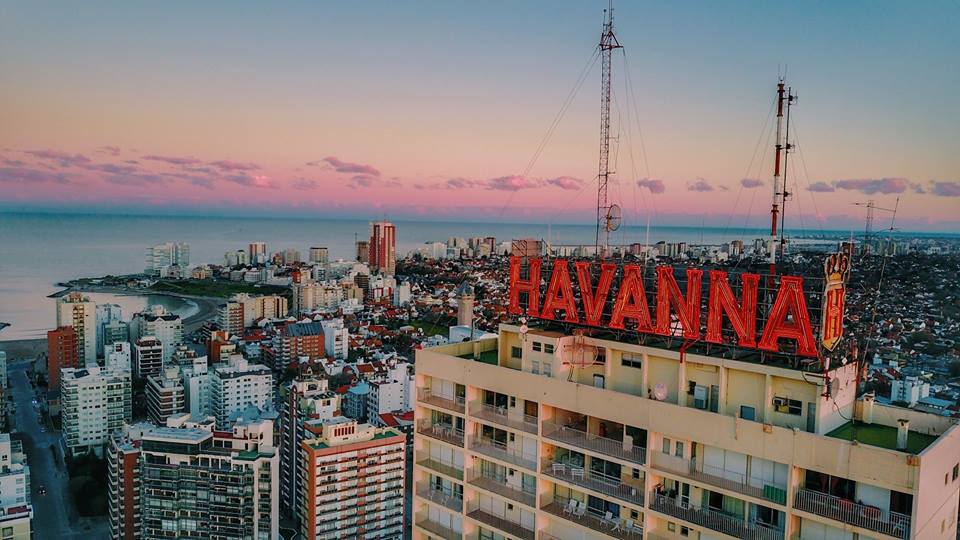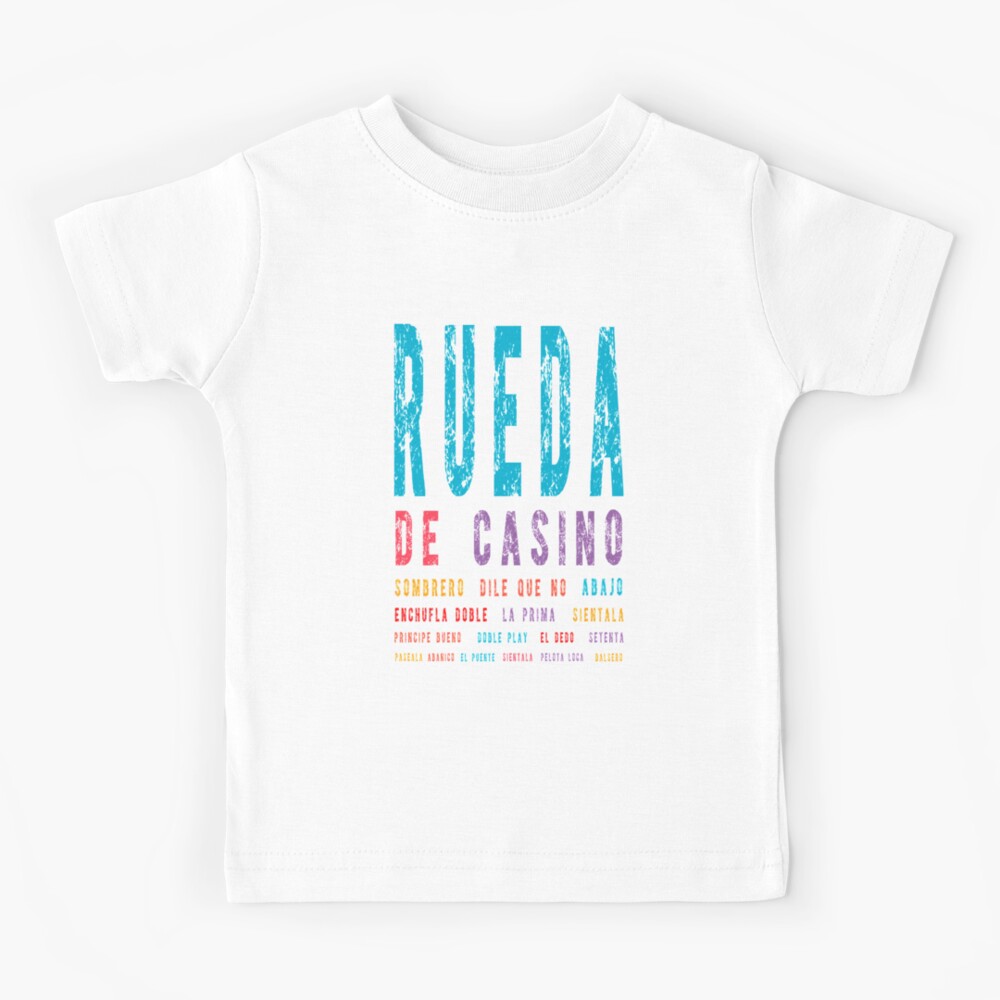El Dedo Salsa Casino
This is an important move because Para el Medio is not only the standard way to start a Rueda de Casino but it is also one of the best ways to start a social 1-on-1 dance. Para el Medio means “toward the middle”. It is sometimes shortened to Pal Medio or Al Medio, or El Medio or just Medio. The function of the move is to establish synchronised stepping at the start of a Rueda or a social dance.
There are at least three good ways to do Para el Media, and the Rueda Caller or Lead often count the steps aloud (optional):
- “A Tiempo” (1-3-5-7), bringing the foot in on “1”
- Step/tap on all counts (“Mambo”), stepping out on “1”
- Lazy “Mambo” mostly moving the body
- Para el Medio done wrong
It is called El Dedo (Finger) because it starts with a hand-held Vacilala as in other El Dedo moves. In this case right-to-right handed because it is followed by a right-to-right handed Enchufla. We have three genuine Vuelta right turns in Casino, Cuban Salsa: the sideways Exhibela/Sacala turn on 5-6-7, the Vacilala turn on 1-2-3, and the. Cuban Salsa: Para El Medio Posted on December 28, 2020 by Jesper Tverskov Leave a comment This is an important move because Para el Medio is not only the standard way to start a Rueda de Casino but it is also one of the best ways to start a social 1-on-1 dance. It is called El Dedo (Finger) because it starts with a hand-held Vacilala as in other El Dedo moves. In this case right-to-right handed because it is followed by a right-to-right handed Enchufla. The right-to-right handed Enchufla, how we get into it, the Alardes, and how we get out of it, and into the next Enchufla, is the crux of the move. El Dedo Cuban Salsa. El Dedo is a classic Casino Miami move that starts in a Dile Que No. This salsa move also incorporates vacila and enchufla so it’s important to learn these basic patterns first. Cuban Salsa Instructors: Nicholas Van Eyck and Serena Wong. Never miss a video. Subscribe to our Youtube Channel. If you find this video helpful please share it with family and friends.
1 Step “7” must be on the normal foot
No matter what figure we use in order to create synchronised stepping, and no matter how we step and tap or move our body, one detail must be the same for all solutions: count “7” must end up as a normal count “7” step, or it must be possible, when we exit Para el Medio, to normalise step “7”. Because the positioning of the step “7” foot is all important for the preparation of the next move.
We need step “7” to prime or prep for the next move. At the end of Para el Medio, on “7”, the Lead must be able to position the foot best possible: 1) to start walking forward on the partner circle, or 2) as prep for Dile Que No, or 3) in between the Follow’s feet as prep for Adiós, or 4) to move “forward and back” like in certain Son figures or in “Salsa” basic steps, 5) or just walking forward on the big Rueda circle like in Arriba Tiempo España.
All the three good ways (more might exist) to do Para El Medio result in a perfect exit: on “7” the Lead’s right foot can be placed where ever he wants it, as prep and priming for the next move.
2 A Tiempo (1-3-5-7)
This method is probably the most popular and for good reasons: 1) Most dancers expect to step “a tiempo”, 1 (tap) – 3 (step) – 5 (tap) – 7 (step), 2) For each tap/step both Lead and Follow step with the foot they would normally use, making things easy.
Video 1 is from the infamous “Salsa Lovers” DVDs around year 2000 (uploaded to YouTube much later), Miami, USA. When Rene Gueits gets it right, he is not that bad.
Video Clip 2 is a citation from one of the best makers of educational Salsa videos (LA, Cuban Salsa, musicality), “Dance Papi”, San Fracisco Bay Area, USA, 2015.
The full Dance Papi video on YouTube.
Video Clip 3 is a citation from a YouTube video by “Minneamisalsa”, USA, 2011. The full video has a few more details but only relevant in the context of the Rueda.
The full “Minneamisalsa” video on YouTube.
3 Step/tap on all counts (“Mambo”)
This method is a kind of “Mambo” steps, stepping on 1-3-5-7 and tapping on 2-4-6-8. But from another perspective, it can be confusing that step/tap “3”, “4”, “5” and “6” are on the “wrong” foot, but most importantly: step “7” is correct. The “Mambo” method has the benefit of stepping forward on “1”, because many dancers find that to be the most natural.
The Video Clip 4 is from a Henry Herrera DVD, “Salsa Racing”, Volume 1, “Beginners”, Miami, USA, 2002.
Video Clip 5 is a citation from a video named “Rueda De Buen Aché”, from Boogalu Productions, the location in the video is Santiago de Cuba, year probably around 2007-2008? It is a little difficult to read the steps for Para el Medio but it looks to me that they step/tap on all counts using the “Mambo” method.
4 Lazy “Mambo” mostly moving the body
I don’t have a good video but the stepping is similar to the “Mambo” method but done in a lazy way skipping most of the taps or hardly marking them. Instead the whole body is rocking forward and back, transferring the weight without moving the feet or just a little more or less on the spot.
This Al Medio can be done with big, almost exaggerated, movements, if the music is right, or with tiny movements in a more casual way. It works best in social dancing or in a small Rueda.
5 Para el Medio done wrong

All Para el Medio versions ending up with the Lead’s right foot trapped on “7” must be considered flat wrong. When the foot is blocked, it can not take part in the preparation for the next move. The Lead can still exit Para el Medio by stepping forward on “1” without prepping, but why use these mediocre versions when we have perfect alternatives?
The most common bad Para el Medio is actually very common. The Lead or the Rueda Caller try to use the popular “A Tiempo” version, but instead of bringing the foot in on “1” and start with a tap, the foot is extended out for a full step, out “into the circle”. This mistake is easy to make because it feels the natural way to start.
Video 6 from “Media Noche Salsa”, Israel, 2010, is interesting. “Media Noche Salsa” has produced two almost identical videos with Para el Medio, a correct version, called “international”, and a bad version, called “Israeli”! The following video from 2010 shows the bad version. The “7” is on the wrong foot making it impossible to use the foot to prep for the next move, except for the most simple continuation as in the video.

As can be seen in the video above, the bad version works as long as the dancers just continue forward in the most simple manner. But it is not ok for the Lead to block the right foot on “7”, if he wants to continue with any move in need of the right foot for prepping, like Adiós.
Para el Medio done with “Mambo”, stepping on 1-3-5-7 and tapping on 2-4-5-8, can also end up wrong if the start brings the foot in for a tap instead of out for a step. In this case count “7” ends up as a tap, and “8” becomes a step. Not that nice but the Lead can still use count “7” to prep the next move by positioning the foot and use a step instead of a tap.
We see the wrong “Mambo” version in the next Video 7 from “salsasquad”, Cheltenham, UK, 2012.
The Caller in the above Rueda video, Paul Healey, mostly teach non-Cuban “Salsa”. The problematic Para el Medio is just a misstep. The Paul and Nina “Absolute Beginners Class Videos” (not Cuban) are among the best I have seen: Salsasquad Basic Videos
Both main methods for stepping Para el Medio, 1) “A Tiempo”, bringing the foot in, and 2) the “Mambo” version stepping on 1-3-5-7 and tapping on 2-4-6-8, are equally good in my opinion, and both figures can also be used in the middle of a dance or whenever needed for fun or for resynchronising the dancers.
The third method, the lazy version of “Mambo” with mostly body motion is less versatile, but great fun to the right type of music.
Below you’ll find video clips of the 10 Cuban-style salsa lessons that I took with salsa school La Casa del Son in Havana, Cuba. These videos are intended as an introduction to Cuban-style salsa and as a reference for those who are considering to take salsa classes with La Casa del Son.
Last edited: January 7, 2015
Please note that all instructions (f.e. go forward, back, left, right) are given from the man’s perspective. And, as far as possible, I have added English translations to otherwise Spanish names for the steps, turns and combinations.
Cuban-Style Salsa Lesson 1
Basic Step #0 – Paso de Caminar (Walking Step) with the variations: in place, forward, to the right, back, to the left, rotate.
Basic Step #1 – Paso de Lateral (side step)
Basic Step #2 – Paso delante/delante (forward/forward step)
Basic Step #3 – Paso delante/detras (forward/back step)
Los Amigos (Friends)
Basic Step #4 – Pa Ti Pa Mi or Paso de Casino (For You For Me or Casino Step)
Dile Que No (Tell Her No)
Paso de Casino & El Dedo (Casino Step & The Finger)
Paso de Casino & Vacilala (Casino Step & Look at Her)
Paso de Casino & Manos Paralelas (Casino Step & Parallel Hands)
Cuban-Style Salsa Lesson 2
El Dedo Salsa Casino Online
El Dedo (The Finger)
Vacilala (Look at Her)
Manos Paralelas (Parallel Hands)
Manos Cruzadas (Crossed Hands)
El Dedo & Tu y Yo (The Finger & You and Me)
Vacilala & Tu y Yo (Look at Her & You and Me)
El Dedo & Setenta (The Finger and 70)
Manos Cruzadas & Tu y Yo (Crossed Hands & You and Me)
Cuban-Style Salsa Lesson 3
Setenta (70)
Setenta y Uno (71)
Setenta y Dos (72)
Setenta Por La Tres (70 “for the three”)

Cuban-Style Salsa Lesson 4
America Para El Hombre (America for the Man)
Mariposa (Butterfly)
Cuban-Style Salsa Lesson 5
Setenta Complicado (70 Complicated)
Habana Loco (Crazy Habanero)
Cuban-Style Salsa Lesson 6
Sombrero
Sombrero Complicado
Cuban-Style Salsa Lessons 7, 8 & 9
Setenta y Uno y Medio with Mariposa (71,5 with Butterfly)
Ochenta y Ocho – (88)
Setenta y Uno y Medio (71.5)
Paseala
Lesson 8 and 9 were used to repeat and perfectionize all the previously taught steps, turns and combinations. Additionally, the instructor added one more turn for the female: Coca Cola.
Cuban-Style Salsa Lesson 10
Body movement class for women.
//
Tell me what you think. Connect with me on Facebook, Twitter or Instagram (links match discussion pages for this post) and let me know: What do you think of Cuban-style salsa? And what’s your favourite combination?
Metete El Dedo Salsa Casino
SPECIAL THANKS

To La Casa del Son for letting me record and publish the videos.

El Dedo Salsa Casino Chicago
FURTHER READING
Reviewing Salsa School La Casa del Son in Havana, Cuba.